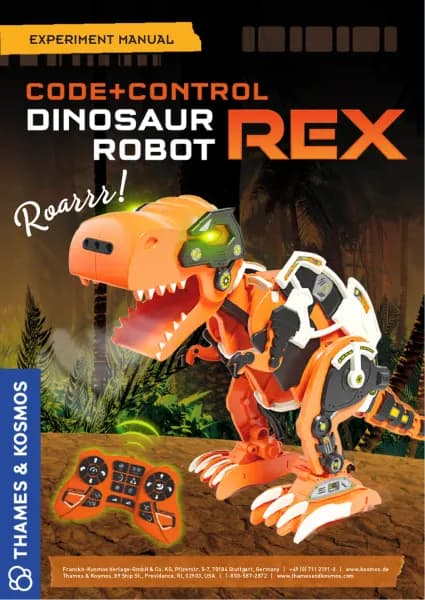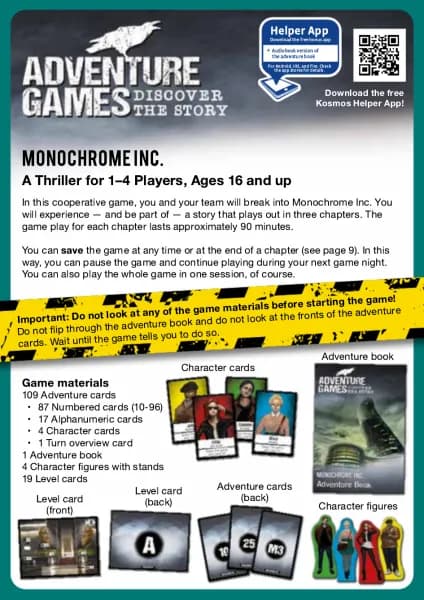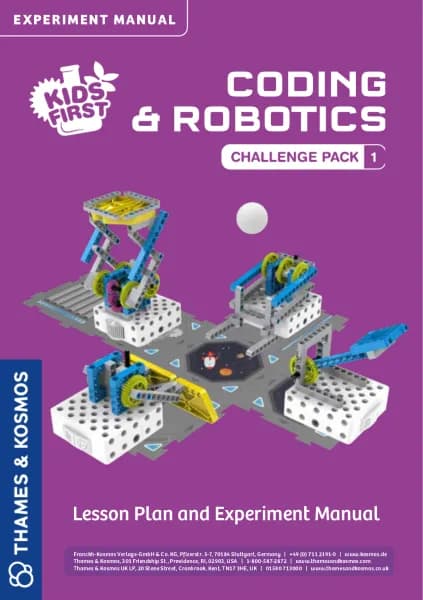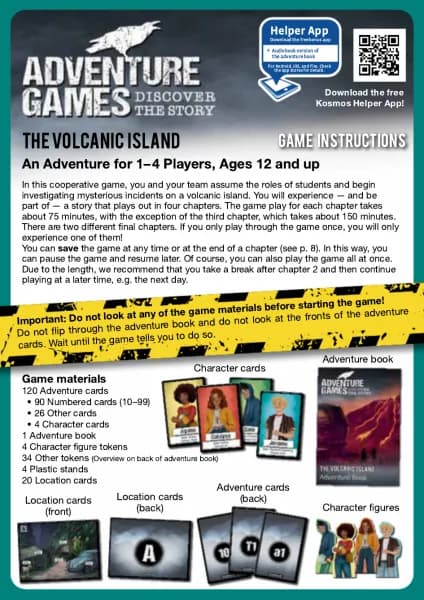Thames & Kosmos Kids First: Crystals, Rocks & Minerals handleiding
Handleiding
Je bekijkt pagina 26 van 36

WHAT’S HAPPENING
With this procedure for determining density, you don’t even have
to know the weight of the individual matchsticks — they all just
have to weigh the same. It turns out that the density is around 3
for minerals such as calcite and fluorite, and the ores have much
higher densities of around 5. But what is density in the first
place? See page 27.
More or less dense
YOU WILL NEED
› Large measuring cup
› Weighing scale from the die-cut sheet
› Wooden stick
› Minerals
› 2 or 3 Boxes of matches
› Paper and pencil
› Adhesive tape, all-purpose adhesive
› Yarn or string, scissors
HERE’S HOW
First, assemble the scale.
1. Remove the parts from the die-cut sheet.
2. Tape the scale pans together into cones.
3. Thread a 10-cm-long (4 in) piece of yarn
through the prepunched center hole of scale
A, and secure it with tape. Thread a 15-cm-
long (6 in) piece of yarn through each of the
scale pan holes. Secure the ends of each of
the four sections of yarn to the end of the
stick above it.
4. Tie another piece of yarn to the exact center
of the stick, securing it with a drop of all-
purpose glue, and use it to hang the scale
from a desk lamp or another similar
support. It should hang freely, with the
scale pans about 15-20 cm (6 to 8 in) above
the table surface. Adjust the scale pans
until they are perfectly balanced, and then
secure them with tape.
Now for the actual measurement:
5. Secure one mineral sample to one of the
scale pan’s yarn (A) with some glue. In the
other pan (B), place as many matchsticks as
is necessary to balance the scale.
6.
Fill half the measuring cup with water, and
submerge the mineral sample in it. Be sure
there are no air bubbles sticking to it! The
scale is now unbalanced, so place as many
matchsticks into scale pan (A) as is
necessary to balance the scale when the
mineral sample is fully submerged in water.
7. Count each of the groups of matchsticks, and divide the number from
B by the number from A. The result is the density of the mineral
sample. Example: 112 matchsticks on B, 27 matchsticks on A. 112
divided by 27 gives you 4.1 — so the density is 4.1.
8. Using this method, measure all the minerals contained in the kit.
1
4
2
5
3
6
EXPERIMENT 12
Bekijk gratis de handleiding van Thames & Kosmos Kids First: Crystals, Rocks & Minerals, stel vragen en lees de antwoorden op veelvoorkomende problemen, of gebruik onze assistent om sneller informatie in de handleiding te vinden of uitleg te krijgen over specifieke functies.
Productinformatie
| Merk | Thames & Kosmos |
| Model | Kids First: Crystals, Rocks & Minerals |
| Categorie | Niet gecategoriseerd |
| Taal | Nederlands |
| Grootte | 30537 MB |







